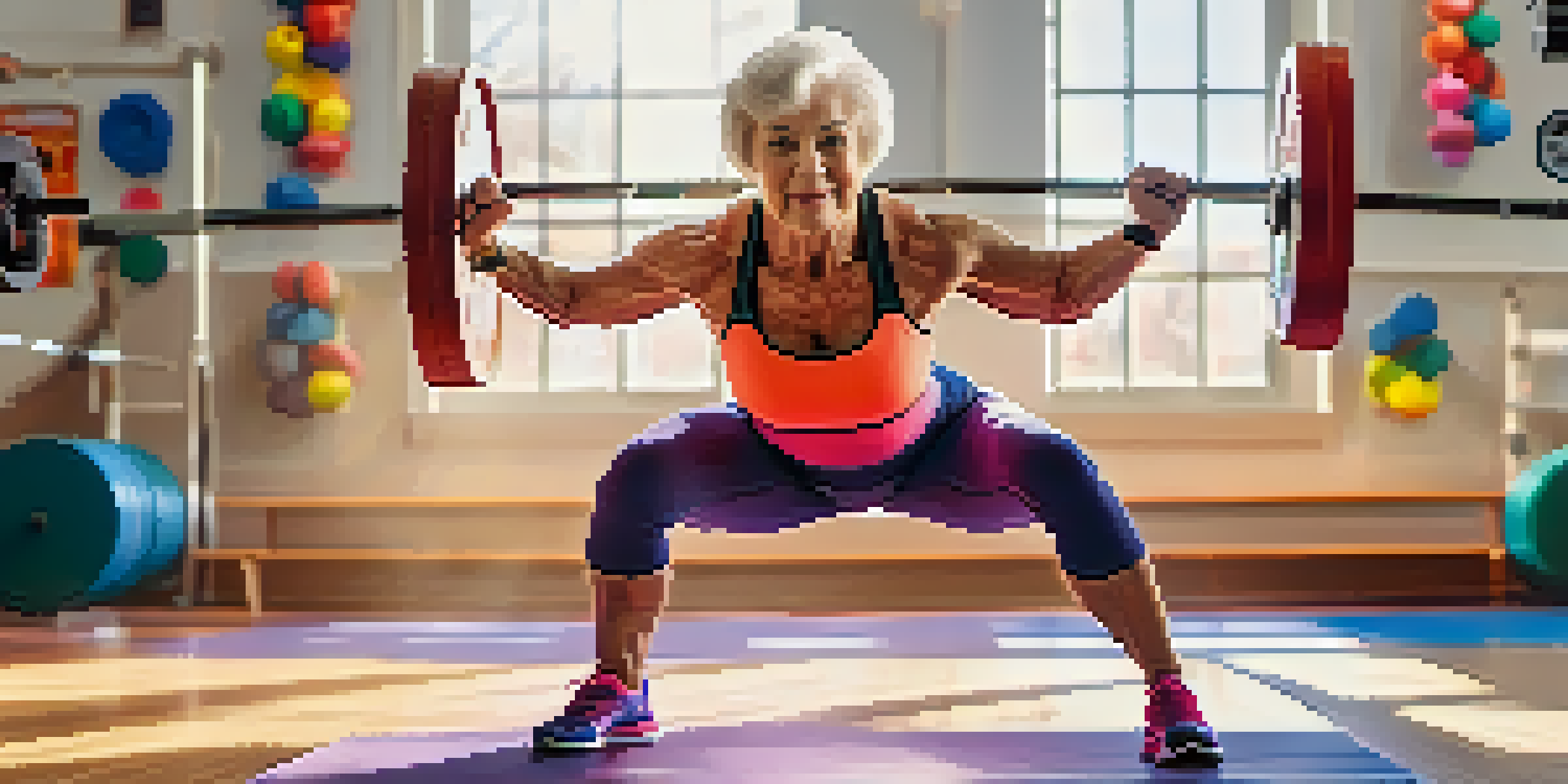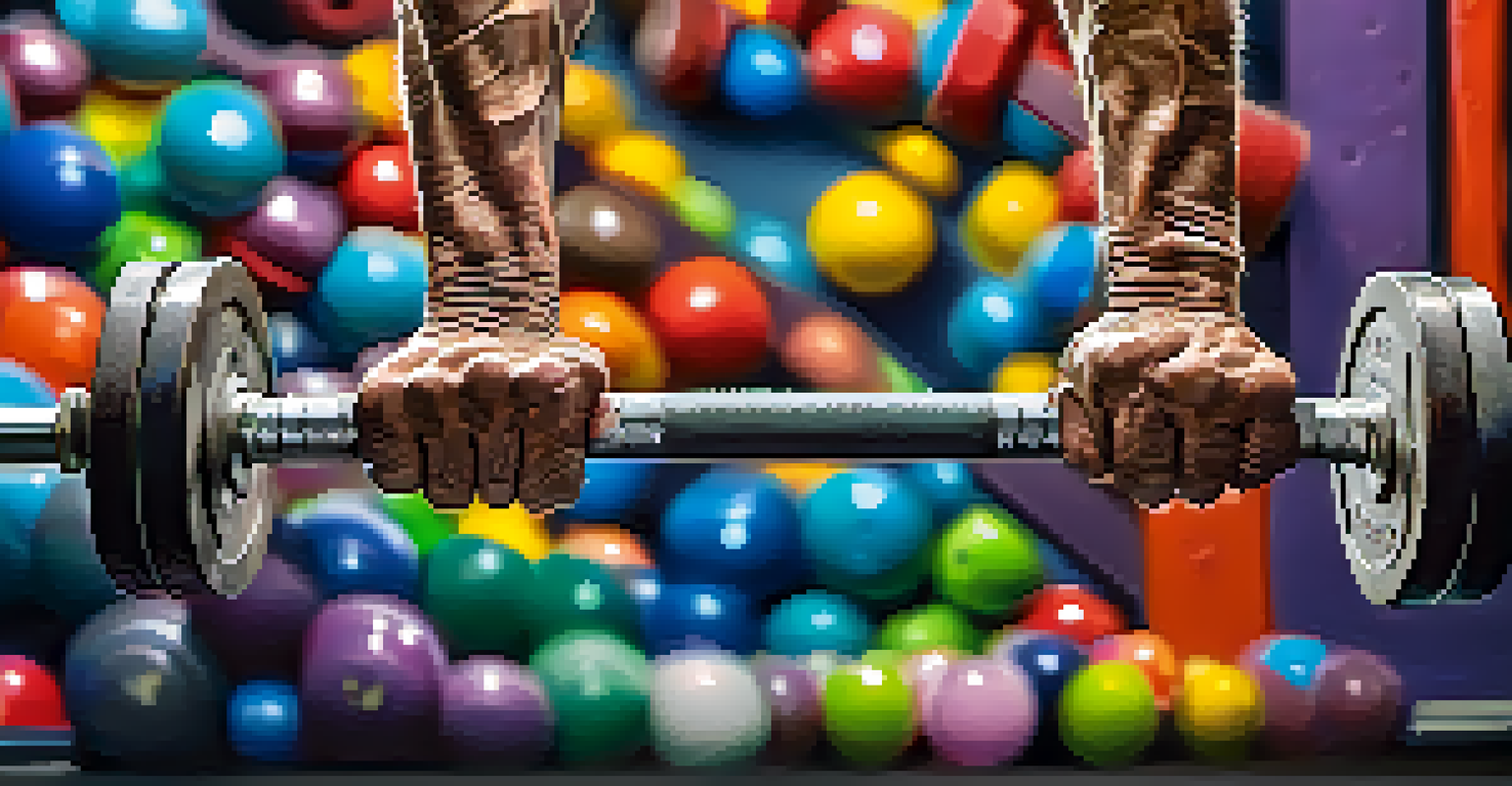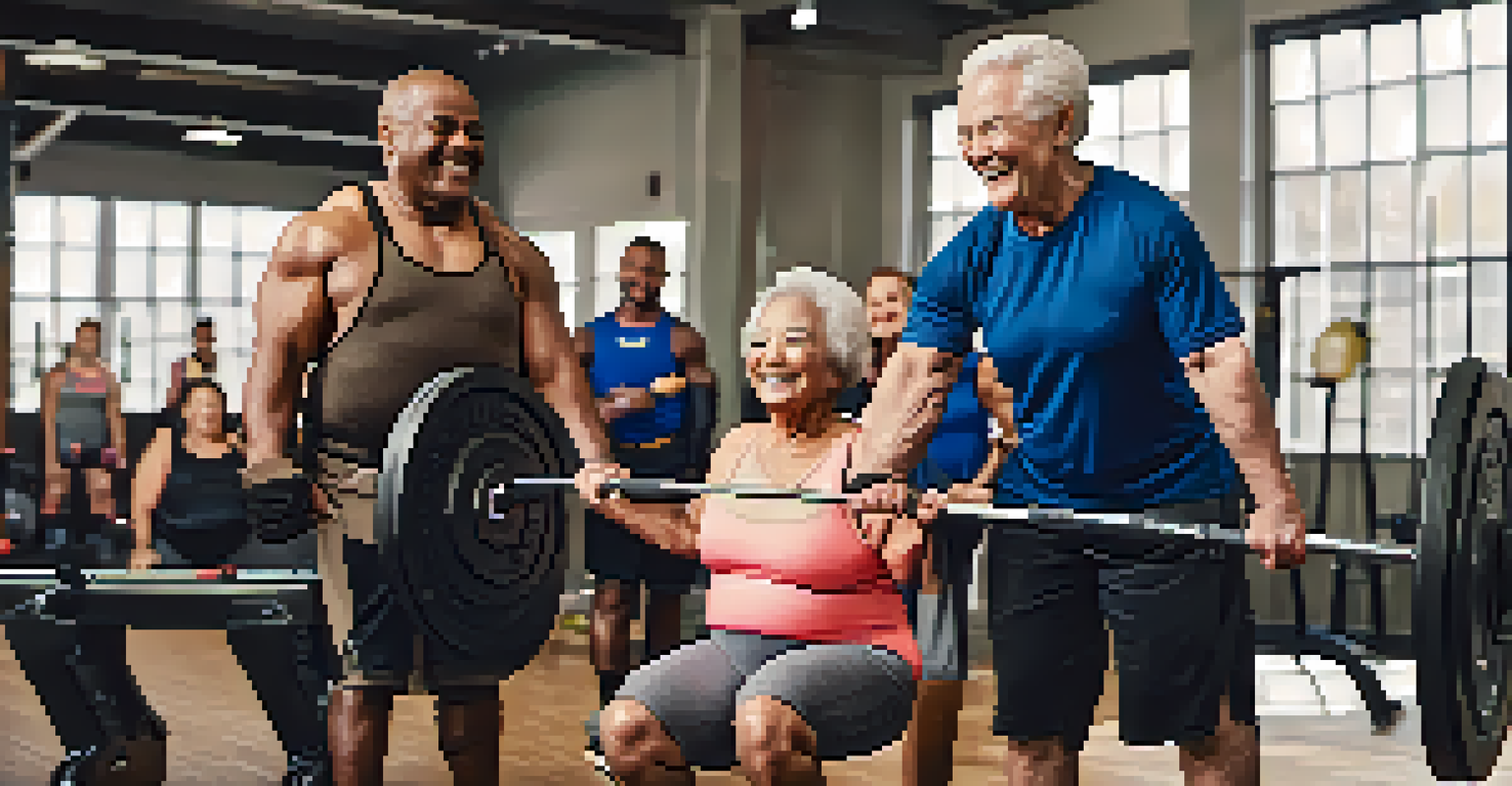Powerlifting for Seniors: Building Strength and Confidence

Understanding Powerlifting and Its Benefits for Seniors
Powerlifting is a strength sport that focuses on three main lifts: the squat, bench press, and deadlift. For seniors, these lifts can provide an excellent way to enhance overall strength and muscle mass. Engaging in powerlifting helps improve bone density, which is crucial for aging individuals, as it reduces the risk of fractures and osteoporosis.
Strength does not come from physical capacity. It comes from an indomitable will.
Beyond physical strength, powerlifting also offers mental benefits. Seniors often face challenges such as decreased mobility or confidence, but setting and achieving lifting goals can boost self-esteem significantly. The sense of accomplishment that comes from successfully lifting heavier weights is empowering and can lead to a more active lifestyle.
Moreover, powerlifting fosters a supportive community among participants. Many seniors find camaraderie in local gyms or clubs, where they can share experiences and encourage one another. This social aspect not only enhances motivation but also combats feelings of isolation that can often accompany aging.
Safety First: Starting Powerlifting as a Senior
Before diving into powerlifting, it's essential for seniors to consult with a healthcare professional. This step ensures that any underlying health conditions are considered, allowing for a safer introduction to strength training. A physical assessment can also help identify any specific areas that need attention, such as joint issues or mobility concerns.

Once cleared to lift, finding a qualified trainer who specializes in working with seniors can make a world of difference. A knowledgeable coach will teach proper techniques, which are critical for preventing injuries. Additionally, they can create a personalized program tailored to individual fitness levels and goals.
Powerlifting Benefits Seniors' Health
Powerlifting enhances strength, bone density, and mental well-being for seniors.
Starting with lighter weights and gradually increasing the load ensures a safe progression. It's important to listen to your body; if something feels off, adjusting the approach is key. Remember, powerlifting is about building strength over time, not rushing into heavy lifts.
Essential Techniques for Senior Powerlifters
Mastering the fundamentals of each lift is crucial for seniors. For instance, the squat should be performed with the feet shoulder-width apart, ensuring the knees track over the toes to avoid strain. Proper form not only enhances effectiveness but also protects joints, which can be particularly vulnerable in older adults.
It's not about how old you are, it's about how you are old.
For the bench press, it's vital to keep the back flat and avoid arching excessively. This position helps to distribute weight evenly and minimizes the risk of injury. Seniors should focus on controlled movements, emphasizing the importance of breathing correctly during lifts to maintain stability and strength.
Lastly, the deadlift requires attention to posture. Starting with the barbell close to the shins and keeping the back straight is essential. A strong grip and core engagement will support the lift, making it feel more manageable. Practicing these techniques at lighter weights builds confidence before progressing.
Building a Powerlifting Routine: Key Components
A well-rounded powerlifting routine for seniors should include a mix of strength training, flexibility exercises, and cardiovascular workouts. Incorporating flexibility training helps maintain mobility, which is essential for performing lifts safely. Simple stretches can significantly improve range of motion and reduce the risk of injury.
Cardiovascular health is equally important, so seniors should consider low-impact activities like walking, cycling, or swimming. These exercises enhance endurance and support overall fitness, making powerlifting sessions more effective. A balanced routine allows for better recovery and prepares the body for strength training.
Safety is Crucial for Seniors Lifting
Consulting a healthcare professional and working with a qualified trainer ensures safe powerlifting practices for seniors.
Finally, consistency is key. Setting a schedule that fits individual lifestyles can keep motivation high. Whether it's two to three days of powerlifting per week, having a plan helps seniors stay committed and track progress, leading to improved strength and confidence over time.
Nutrition: Fueling Your Powerlifting Journey
Proper nutrition plays a vital role in supporting strength training for seniors. A balanced diet rich in protein, healthy fats, and whole grains provides the necessary fuel for workouts. Protein is particularly important, as it aids in muscle repair and recovery after lifting sessions.
Staying hydrated is equally essential. Dehydration can hinder performance and recovery, so seniors should aim to drink plenty of water throughout the day, especially before and after workouts. Understanding when to fuel the body, such as consuming a protein-rich snack post-workout, can enhance gains from strength training.
Moreover, consulting with a nutritionist can help seniors create a personalized meal plan that aligns with their powerlifting goals. This tailored approach ensures that all dietary needs are met, creating a solid foundation for strength and overall health.
Overcoming Challenges: Mental and Physical Barriers
Many seniors may face mental barriers when considering powerlifting. Common fears include the worry of injury or feelings of inadequacy compared to younger lifters. It's essential to acknowledge these fears and realize that everyone progresses at their own pace. Building a positive mindset can significantly enhance the experience.
Physical challenges, such as limited mobility or previous injuries, may also arise. However, with the right guidance and modifications, seniors can still participate in powerlifting safely. Adaptations to movements can help accommodate any limitations while still allowing individuals to enjoy the benefits of strength training.
Community Support Boosts Motivation
Joining powerlifting groups fosters camaraderie and motivation, helping seniors overcome challenges in their fitness journey.
Creating a supportive environment is crucial in overcoming these barriers. Joining a class or lifting group with others who share similar goals can foster encouragement and motivation. Celebrating small victories together can build a sense of community and reinforce the belief that powerlifting is achievable at any age.
Success Stories: Real-Life Examples of Senior Powerlifters
Hearing success stories can be incredibly motivating for seniors considering powerlifting. Many individuals have transformed their lives through strength training, often recounting their journeys from feeling weak or frail to becoming confident powerlifters. These stories serve as powerful reminders that age is just a number when it comes to fitness.
For instance, a 70-year-old woman named Mary started powerlifting to combat her osteoporosis. Over time, not only did she see improvements in her bone density, but she also gained newfound confidence in her physical abilities. Mary's story highlights how powerlifting can lead to significant health benefits and a more active lifestyle.

These real-life examples show that with dedication and the right support, seniors can achieve remarkable feats. Engaging in powerlifting not only builds strength but also fosters a sense of accomplishment and community, leading to a richer, more fulfilling life.